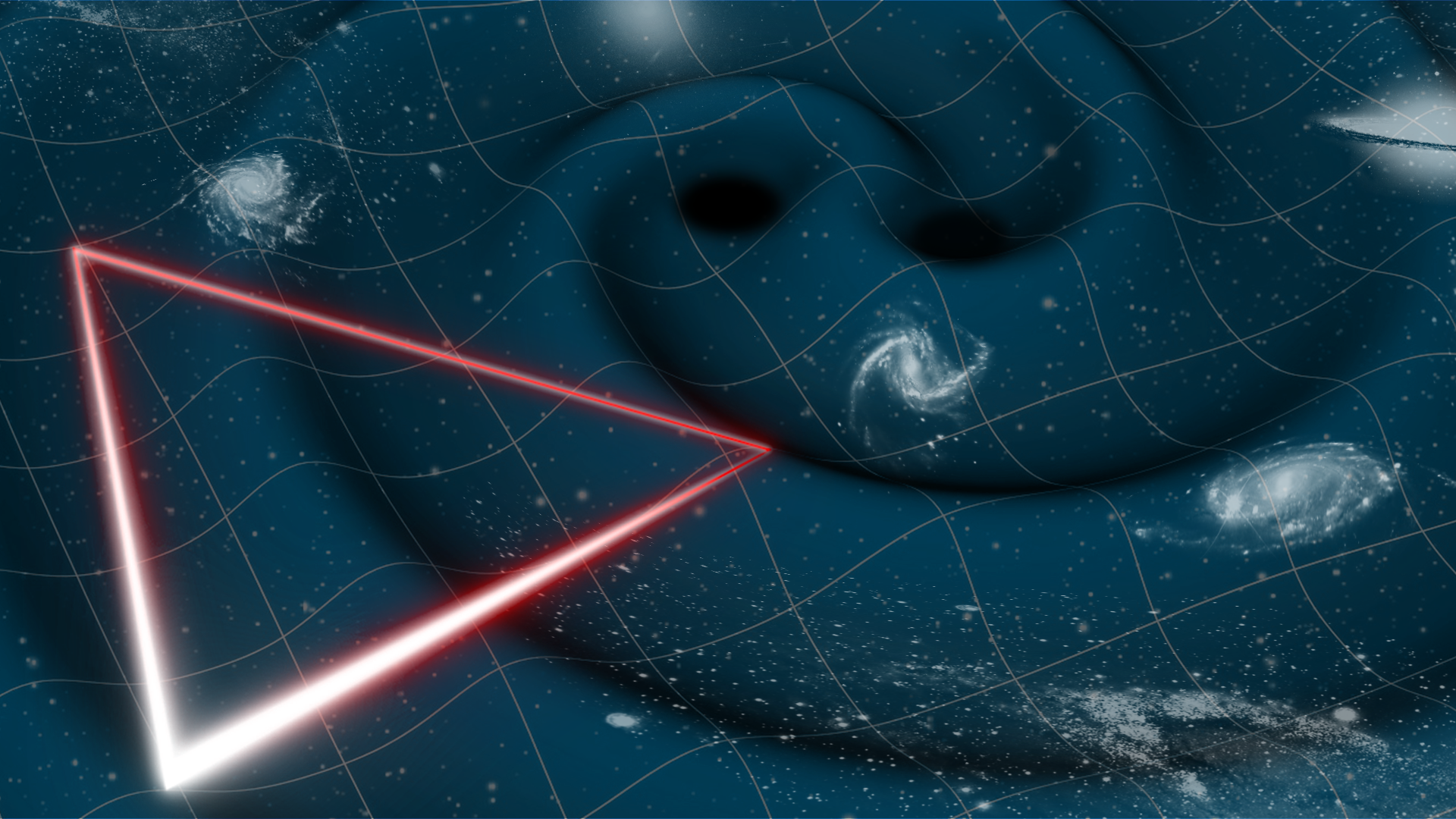

Crédits : ESA, CC BY-SA 3.0 IGO |
The Laser Interferometer Space Antenna (LISA) [2], expected in 2035, will be a large-scale space mission designed to detect one of astronomy's most elusive phenomena: gravitational waves, which are oscillations in space-time propagating at the speed of light and which, according to the theory of general relativity, can be generated by, for example, a system of two merging black holes or two neutron stars. LISA will be the first space-based gravitational wave observatory, and will consist of three satellites separated by 2.5 million km in a triangular formation, following the Earth in its orbit around the Sun. |
The Institut de Physique Théorique (IPhT) joined the LISA mission in 2018, when some of its researchers became associate members of the LISA Consortium, which is a vast international collaboration that combines the resources and expertise of scientists from many countries around the world. Together with ESA, its member states and NASA, the LISA consortium is working to bring the LISA mission to fruition.
As a theoretical physics laboratory, the IPhT has a diverse range of expertise, from mathematical physics and string theory to theoretical particle physics and cosmology. In recent years, gravitational waves have become a common denominator for many of these disciplines. Recent activities on gravitational waves at the IPhT, which play a major role in the international scientific community, include : the study of the two-body problem in the "post-Mikowskian" expansion using modern scattering amplitude techniques; the study of the two-body problem in extensions of general relativity using effective theory techniques; the derivation of constraints on dark energy and modified gravity models from gravitational wave propagation; the study of quantum effects at the black hole horizon.
All these activities involve exploring specific theoretical aspects relevant to the LISA mission, with the aim of gaining a deeper understanding of the two-body problem and, consequently, of waveform predictions from general relativity, and/or exploring new fundamental physics. In this context, some IPhT researchers are active in the LISA consortium's "Fundamental Physics" and "Cosmology" working groups, and have contributed to recent papers that define the future direction of their research [3], [4].
[1] ESA announcement
[2] LISA Consortium: lisamission.org
[3] Prospects for fundamental physics with LISA (2020)
[4] New horizons for fundamental physics with LISA(2022)
CNES announcement
Other announcements: CNRS ; IRFU
